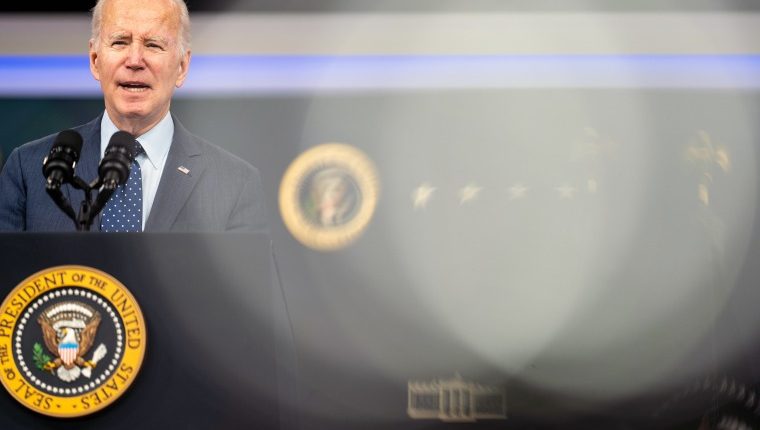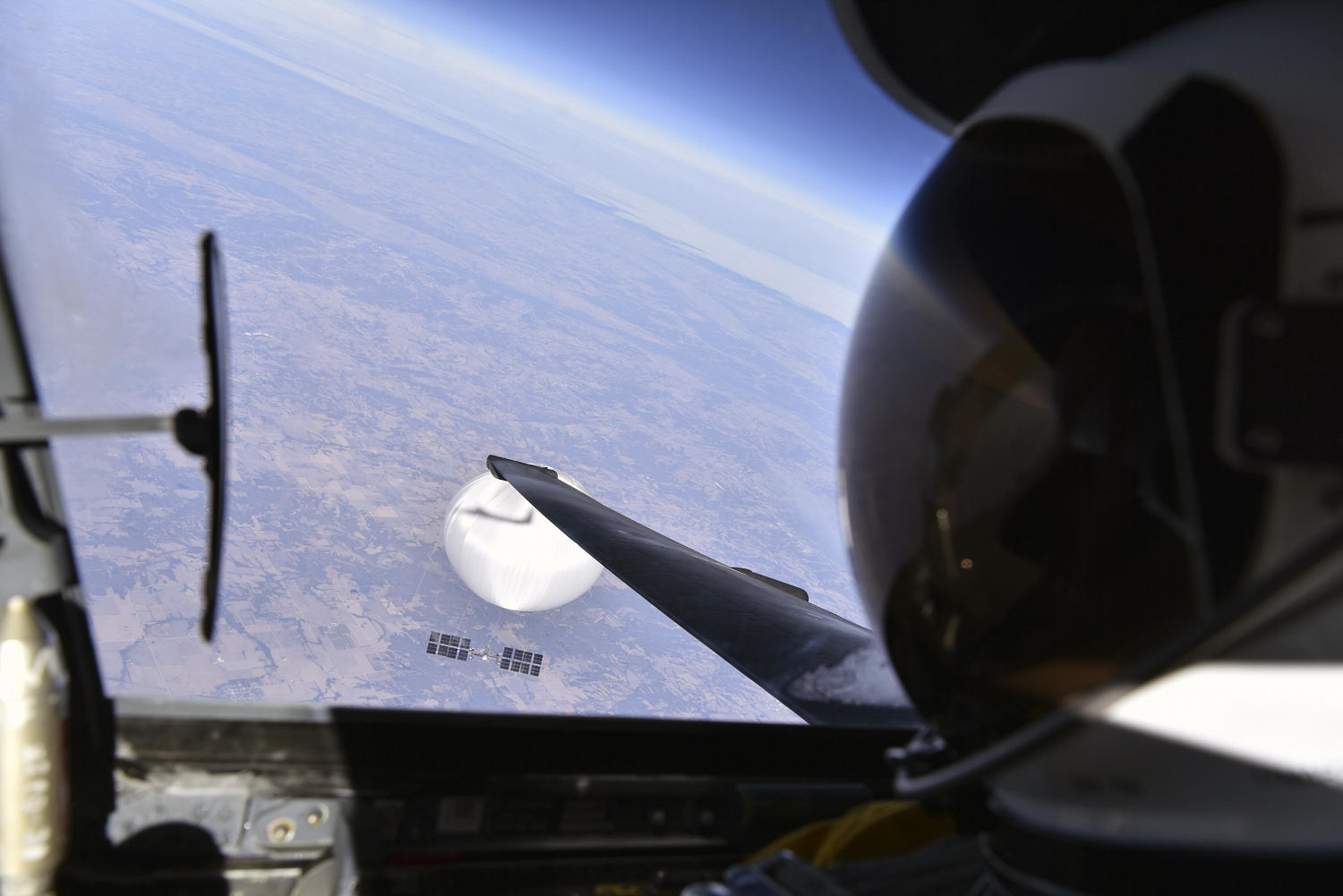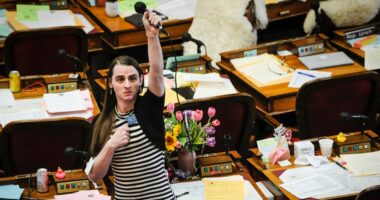WASHINGTON — On a Friday evening last January, Gen. Glen VanHerck, the Air Force commander in charge of defending American airspace from intrusion, called President Joe Biden’s top military adviser, Gen. Mark Milley.
U.S. intelligence officials had just notified the general that for roughly 10 days they had been tracking a mysterious — and enormous — object flying over the Asia-Pacific, VanHerck told Milley. The object had crossed into U.S. airspace over Alaska and VanHerck said he planned to dispatch military jets to fly alongside it and attempt to assess what it was.
The previously unreported Jan. 27 phone call between Milley, the chairman of the Joint Chiefs of Staff, and VanHerck, the head of the North American Aerospace Defense Command, set off an eight-day scramble inside the Biden administration to respond to a Chinese spy balloon the size of three school buses floating over the U.S.
The spy balloon exposed an increasingly brazen China’s competitive advances miles above the Earth and brought the most critical relationship in the world to one of its lowest points in recent history.
Nearly a year later, U.S. relations with China have not fully recovered and officials from the two nations have apparently not discussed it in detail. An American effort to create global norms in the largely unregulated spaces above the Earth has stalled. And VanHerck warns that the Chinese balloon program remains active and the U.S. has failed to develop the systems needed to detect spy balloons before they become a threat.
Privately, Biden administration officials complain that the political and public outcry over the balloon was wildly disproportionate to any threat it posed to U.S. national security. In their view, because China was so angered and humiliated, the damage done to the relationship between Washington and Beijing was a far graver threat to the U.S. than the balloon itself.
“It caused so many problems,” one senior administration official lamented.
Scrambling to respond
Administration officials at first hoped to conceal the balloon’s existence from the public, and from Congress, according to multiple former and current administration and congressional officials.
“Before it was spotted publicly, there was the intention to study it and let it pass over and not ever tell anyone about it,” said a former senior U.S. official briefed on the balloon incident.
A senior Biden administration denied that there was an effort to keep the balloon secret. “To the extent any of this was kept quiet at all, that was in large part to protect intel equities related to finding and tracking them,” the official said, referring to intelligence gathering. “There was no intention to keep this from Congress at any point.”
Soon after VanHerck’s phone call with Milley, U.S. military jets dispatched from Alaska used their targeting pods to determine what was on board the object. They confirmed that it was a Chinese spy balloon that was not carrying offensive weapons but was outfitted with a large payload of surveillance equipment.
VanHerck began sending emails every 12 hours to Defense Secretary Lloyd Austin, Milley and other Pentagon leaders to update them on the balloon’s location, threat, projected flight path and likely intent.
In one email, VanHerck wrote that he determined the balloon was not an imminent threat and did not have hostile intent, so he did not have the authority to shoot it down. That order would have to come from the Pentagon and the White House.
Biden first learned of the balloon on Jan. 31, three days after VanHerck’s phone call to Milley. Top aides told him it appeared headed for the continental U.S., and Biden asked for options from the military for how to deal with it.
The balloon’s ability to fly and gather intelligence was mostly powered by 16 solar panels, and it was remotely steered for a time from inside of China, while also using the wind and the jet stream to push it across the U.S.
Early photos from the U.S. military of the balloon’s payload showed antennas that were likely used to listen to cellphones and other signals. The payload weighed about 2,000 pounds and was about 200 feet tall.
Biden’s military advisers warned him that it could not be safely shot down because of a massive potential debris field that would endanger people and structures below. NASA initially assessed that field to be 70 miles wide and 70 miles long, with thousands of pounds of debris falling 65,000 feet.
The president asked basic questions about the balloon and its capabilities. At times, he grew frustrated with how little U.S. intelligence officials knew about China’s balloon program.
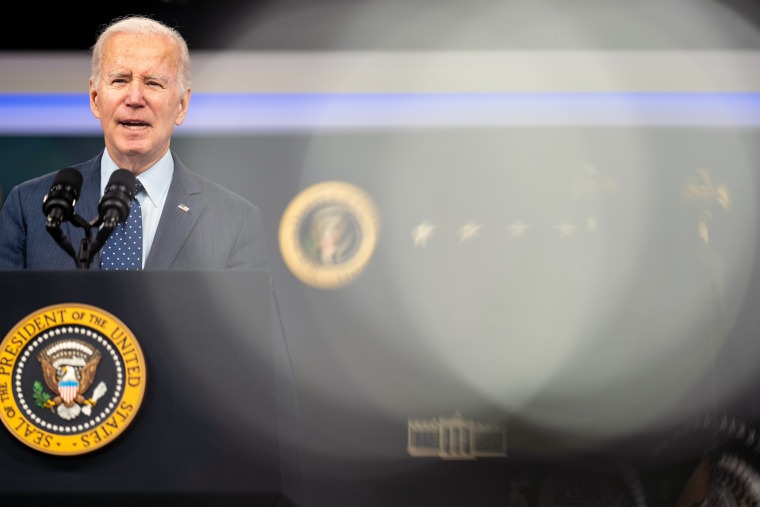
American skies
When it crossed into Montana on Jan. 31, the Pentagon was tracking it with radar, F-22 jets and other aircraft. They watched the balloon closely and collected intelligence on its capabilities.
On Feb. 1, NBC News told White House officials that it was planning to report that a Chinese spy balloon was flying over the U.S. and asked for comment. With NBC preparing it report, and Biden’s decision not to shoot it down, officials hastily organized briefings for lawmakers and the media to try to get ahead of the story.
The U.S. also summoned Chinese diplomats for answers on the balloon. Secretary of State Antony Blinken and then-Deputy Secretary Wendy Sherman met with officials from the Chinese Embassy, but the Chinese diplomats denied the balloon even belonged to China. U.S. officials believe they genuinely did not know about it.
U.S. officials later assessed that Chinese President Xi Jinping knew about the balloon program but didn’t know about this specific one, including that it had crossed into U.S. airspace. American intelligence officials concluded that Xi was embarrassed by it. Some believe that’s at least partly what led to the ouster of China’s defense minister in October.
Feb. 1 also was the first time Austin, the defense secretary, spoke to VanHerck about the balloon. Austin took the phone call at 3 a.m., underscoring how urgent the issue had become. Until then, his top aide had received emails from VanHerck, as the secretary was traveling in Asia and focused on that trip.
“They weren’t paying attention,” a senior U.S. official later said.
VanHerck said he wasn’t asked to present options until Austin made the request on behalf of the president. After being briefed at the White House on ways to shoot down the balloon, Biden directed the military to do so as soon as safely possible.
But the enormous debris field remained a danger. The military, along with NASA, began to work on ways to decrease its size by using the weather, trajectory and size of the balloon, and its estimated payload.
As the balloon continued taking photos and attempting to gather sensory data to store on board for later, the U.S. gathered information on how it operated. VanHerck later told lawmakers that American intelligence officials had to get special authorization to collect intelligence on the balloon while it was over the U.S. and that they were granted that authority.
After NBC News broke the story on Feb. 2, officials also arranged to brief other media outlets later that evening. Once the balloon’s existence became public, U.S. officials said it stopped transmitting data. Officials also assessed that China’s plan was to self-destruct the balloon, not return it back home.
A firestorm in Washington
The balloon sparked a political frenzy in Washington. Several Republican lawmakers expressed anger that they were not briefed on the balloon earlier, before it was over Montana.
The partisan attacks played out as Blinken was preparing for a critical visit to Beijing. Blinken’s trip was a follow-on visit after Biden and Xi met in November in Bali to try to stop relations between their two countries from worsening.
On Feb. 3, China issued what for Beijing was an unusual public apology. “The airship is from China. It is a civilian airship used for research, mainly meteorological, purposes,” the Chinese Foreign Ministry said in a statement. “The Chinese side regrets the unintended entry of the airship into U.S. airspace due to force majeure.”
In the U.S., China’s claim it was a weather balloon that veered off course was dismissed as insufficient and dishonest. That day, Blinken announced he was postponing his trip to China.
By then, U.S. military and NASA officials had developed a plan to minimize the debris field to a square area 6 nautical miles wide and long. Biden signed off on the military shooting down the balloon over U.S. territorial waters, with U.S. Navy assets nearby to collect the wreckage.
On Saturday, Feb. 4, a U.S. Air Force F-22 shot down the balloon exactly 6 miles off the coast of South Carolina.
China only learned the U.S. military downed the balloon after it was in pieces in the Atlantic Ocean. Chinese officials sent word that Xi was angry that the Biden administration didn’t give him a heads up, particularly in light of his government’s apology.
Nearly two weeks later, Biden delivered prepared remarks on the balloon. He announced four steps his administration would take to get a better handle on the issue of surveillance balloons going forward. One was for Blinken to work with U.S. allies to establish what Biden called “global norms in this largely unregulated space.”
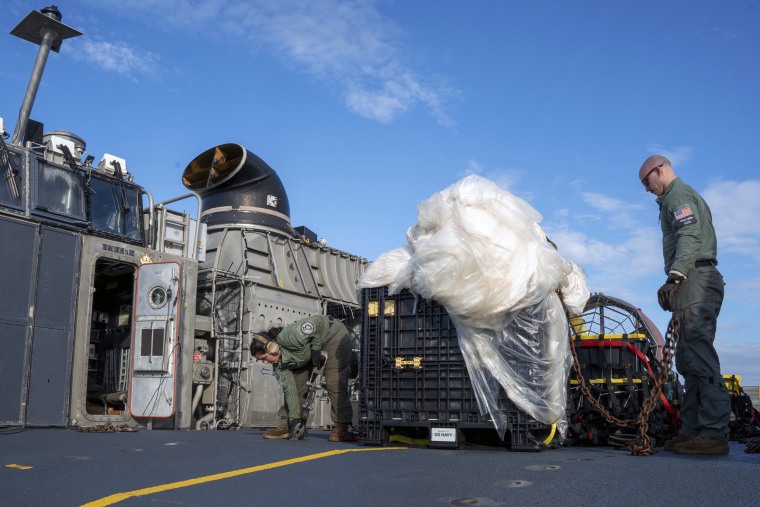
Nearly one year later
As the one-year anniversary of the balloon entering U.S. airspace approaches, that effort remains unfinished.
On Dec. 18, State Department spokesperson Matt Miller issued a statement calling on the United Nations’ International Civil Aviation Organization “to prioritize work on higher airspace operations, accelerate efforts to identify solutions for manned and unmanned aviation traffic in that airspace, and use the coming year to advance important technical work in this area.”
“This is just the beginning,” Miller promised.
VanHerck, the NORAD commander, said in an interview with NBC News this month that he learned lessons from the balloon incident, but he would not change how the U.S. responded.
“I look back and think that everything worked as it should,” he said. “While we can be critical of the decision of where and the timeline to shoot it down, I think in the end, the best decision and outcome happened.”
He added, “We kept the American and Canadian people safe.”
But VanHerck said that the U.S. still lacks the over-the-horizon radar capability it needs to spot such a balloon far sooner.
“I’m confident in our ability to see that over our homeland,” he said. “I would like to see it over the horizon before it approaches our homeland.”
While the U.S. is not aware of any other Chinese spy balloons that have flown over the country since last February, he said the Chinese stratospheric balloon program remains active. VanHerck believes it is primarily focused on the western Pacific to collect signals, video, and infrared and electro-optical intelligence for a potential crisis or conflict there.
“A cheap, satellite-like capability to fly in the stratosphere,” he said, “to give them what I would call a command and control, to share information, to collect.”
Biden and his national security aides, meanwhile, have tried to play down the China balloon incident. For much of 2023, they tried to put it behind them and get U.S. relations with China to a better place.
After months of efforts, the president’s team finally secured a meeting between Xi and Biden last month in San Francisco. During the summit, the balloon did not came up in the two leaders’ discussions. Officials said Biden never raised it.
Source: | This article originally belongs to Nbcnews.com
